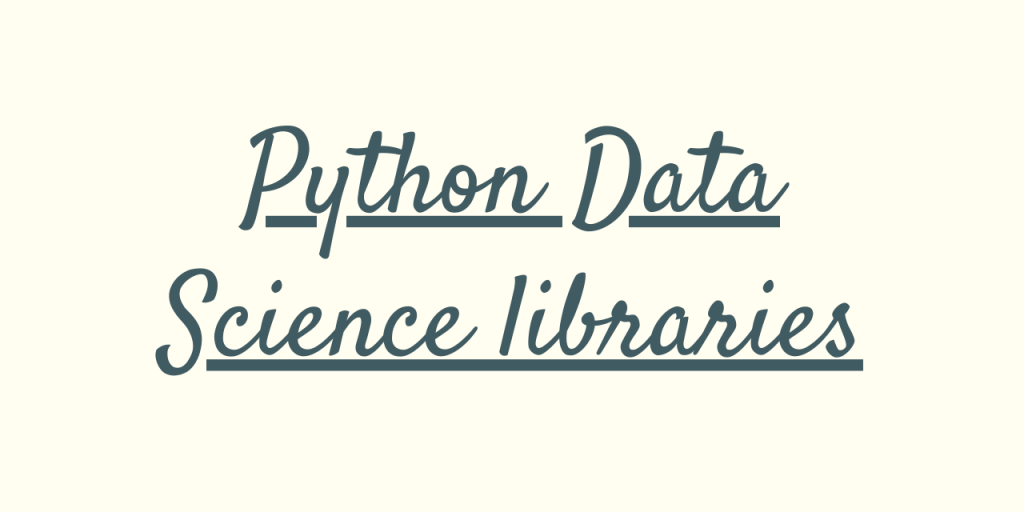Hello, readers! In this article, we will be focusing on 5 Python Data Science libraries , in detail.
So, let us begin!! 🙂
Why use Python Data Science libraries?
Python is a strong programming language which offers us with a huge amount of different functions in the face of modules.
Focusing specifically on the data science domain, python is one of the best fit for the following reasons–
- In-built libraries to server various data science tasks.
- Various development modules available for use.
- Excellent memory management capabilities.
- Complex tasks processing algorithms.
Keeping the above advantages in mind, Python can be used as a strong tool to handle and solve data science problems.
it contains various modules to solve the mathematical computational problems and process the data values.
In context to the topic, we will be looking at the below modules that serve as a strong support to Data Science–
- NumPy
- Pandas
- SciPy
- Matplotlib
- Beautiful Soup
1. Pandas Library
Python Pandas module can be considered as of the key items for data analysis in the domain of data science. While solving any data science-related problem, the primary task is to clean and process the data and make it available for modeling.
With Pandas module, comes a data structure named DataFrame which formulates the data in the form of rows and columns. It also offers us with Series data structure to frame the data for analysis.
Pandas can be considered as one of the strongest module for data analysis today. It offers us in-built functions to perform basic cleaning of data such as missing value analysis, outlier analysis, etc. It also enables merging of data columns for efficient performance.
2. NumPy library
Python NumPy module is the base for all most every other library especially with regards to mathematical computation. It enables and supports strong mathematical computation for statistical analysis of data values.
Mathematical computation is the base for statistical analysis which is served by the NumPy module. It offers us multidimensional arrays to deal with the statistical data. It also offers us various inbuilt functions to perform cleaning of data as well as computation.
NumPy also supports inter-operability.
3. SciPy library
Python SciPy library is mostly built upon the NumPy library. It does most of the advanced computations with regards to modeling of the data. SciPy library helps us to achieve statistical analysis of data, algebraic computations, optimization of algorithms, etc.
With SciPy, we can even perform parallel computations on it. It contains functions for data science operations such as regression, probability, etc.
In a nutshell, all the advanced computations with regards to statistics, modelling and algebra can be easily taken care by SciPy module.
4. Matplotlib library
With data analysis and modelling, comes visualization. Data Visualization is one of the strongest concept of data science. It gives a face to the analysis and enables in easy understanding of the data.
Python Matplotlib module provides us with various functions to have the data visualized. It enables us to create 2-D/3-D graphs, structures through the Python script.
It provides wide ranges of structures for plots such as histograms, bar graphs, contour plots, etc.
Conclusion
Python is a widely used, flexible, and all-purpose programming language. Because it is clear and simple to learn Data Science with Python, it is great as a first language. It is also a useful language to have in any programmer’s toolkit because it can be used for everything from web development to software development to scientific applications.
For more such posts related to Python programming, Stay tuned with us.
Till then, Happy Learning!! 🙂
